How to distinguish a female angelfish from a male?
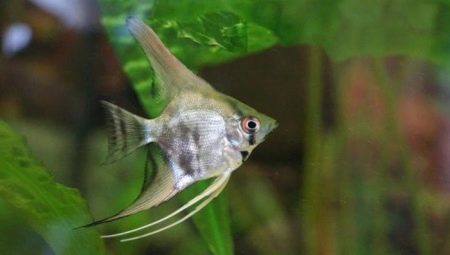
Some of the most attractive representatives of aquarium inhabitants are scalars. The scalars belong to the cichlid family. They are also called angel fish due to the unusual structure of the body, similar to a wing, a leaf.
In the wild, this species is found in the basins of the rivers of South America, Amazon and Orinoco. Scalarians are found in slow-flowing bodies of water, which allows them to skillfully maneuver in the underwater kingdom.
The first mention of this species was made in 1823 by the zoologist Martin Heinrich Karl Lichtenstein. And in 1840, Heckel classified the scalar into a separate genus. A rather unusual body structure provides them with constant attention of aquarists - for example, almost any pet store has a wide selection of these fish. The cultivation of scalars in aquariums began in the late 1920s and 1930s.
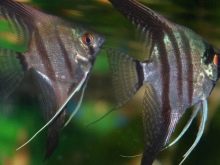
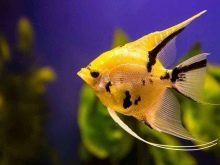
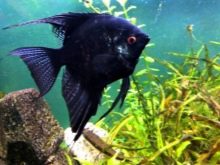
Description
If we talk directly about the structure of the body of the scalar, then it is worth highlighting their rounded body compressed on the sides, giving the fish a flat appearance. The fins - anal and dorsal - are elongated, which gives the fish an aesthetic appearance. The most common color of fish is silver-gray, which determines their ability to successfully camouflage. There are also marble, black, pearl, striped, leopard and other colors. An adult can reach a length of 15 cm and a height of 25 cm.

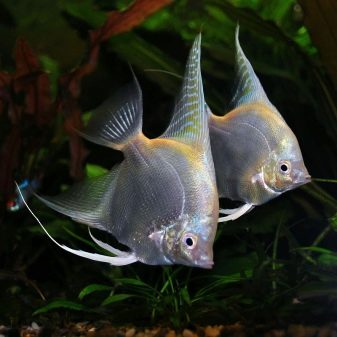
The scalars are predatory fish, they consume small fish, larvae, shrimp. Moreover, their character is quite peaceful, some subspecies can be combined in an aquarium with non-aggressive fish species.
Content
With proper care, they can live in an aquarium for over 5 years.... It should be borne in mind that the recommended volume of the aquarium is 50 liters per individual. When breeding this type, the aquarium should be chosen from 100 liters in volume.
If you are thinking about breeding scalars, at the initial stage it is recommended to purchase young individuals, on average 6-8 pcs. Puberty in this species occurs by 10-12 months, so the acquisition of young individuals in such numbers will increase the chances that you will have both males and females. Next, you need to determine the sex of the individuals, which is a rather complicated process.
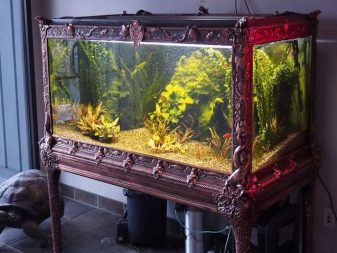

The main differences between males and females
You can distinguish between a boy and a girl after the maturation period, at the age of 12 months. Although the fish look the same at first glance, the careful aquarist can easily spot the main differences. Until puberty is reached, it is not possible to distinguish a boy from a girl, due to the absence of certain differences.

You can determine the gender by the following criteria.
- Dimensions. Like most representatives of the aquatic world, males slightly exceed the size of a female, and their age must be taken into account. This fact is not required - perhaps your fish has features similar to the individual characteristics of people. However, for representatives of the same age, the difference will be immediately visible.
- Forehead. Females have a sunken, wavy forehead, while males have a well-pronounced hump.
- Fins. Females have an even front fin, while in males it is bifurcated. The dorsal fin in girls is less elongated than in boys. In this case, there are stripes with gaps on the dorsal fin. Girls have a maximum of 6, boys have more than 7.
- Pectoral keel more pronounced in males than in females.
- Between fin and anus the scalar has an outgrowth (papilla), in girls it is thickened, in boys it is directed backward and pointed. This moment is clearly visible after puberty.
- In males, the keel grows from the papilla.
- Males have a sharp vas deferens, and females have a wide ovipositor.
- On the back line, you can also find out what gender you are dealing with. So, the line of the back in males makes a kind of angle when meeting with the dorsal fin; in females, the opposite structure is observed.
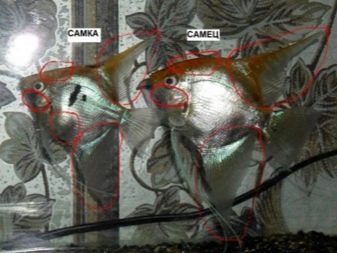

Cases have been identified by aquarists when females of this fish species imitate the behavior of males. In this case, the fish also lay eggs, but they are not fertilized. Such couples need resettlement. But it should be borne in mind that in fish, like all living things, there are also cases of male infertility.
The schooling lifestyle characteristic of scalars changes when the breeding period is reached. So, when forming a pair, you can notice that it will swim separately, while choosing a place in the aquarium that is most suitable for laying eggs. Therefore, an observant novice can also adhere to these behaviors of these ornamental fish.
It is necessary to monitor the formed pair most carefully, since they are monogamous... If one of the individuals dies, then it is possible that the second will not survive the loss. This happens if the remaining fish begins to try to injure itself, both on the aquarium walls and on other surrounding objects. Thus, it is not recommended to separate and settle established couples.
There are aquarium forums where you can upload photos of your pets and get advice. In doing so, you need to focus on the clarity of the photos - this is how the advice received will be most relevant.
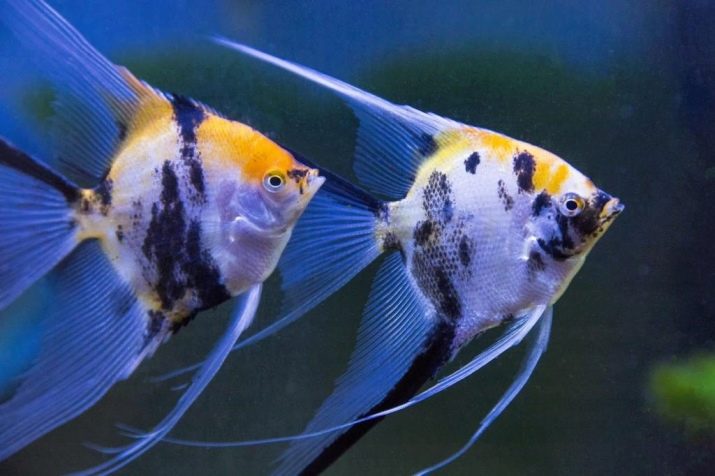
Spawning
The ability to reproduce fish is influenced by the quality of their care. You should choose high-quality food, in this case it is recommended that only live food. In addition to a suitable feed, clean water is a prerequisite for favorable spawning. The water temperature should be 28 degrees.
It has been noticed that the most common time for laying eggs is the second half of the day. The spawning process itself takes an hour and a half on average. During this period, you can see how the female nestles on the surface of the aquarium, then begins to spawn in rows. The male, on the other hand, simultaneously with the female imitates her actions and fertilizes the eggs.
Spawning can occur every two weeks, at the same time, you should quickly collect the caviar and transfer it to a separate container. A separate space for eggs will ensure a successful breeding of fry.
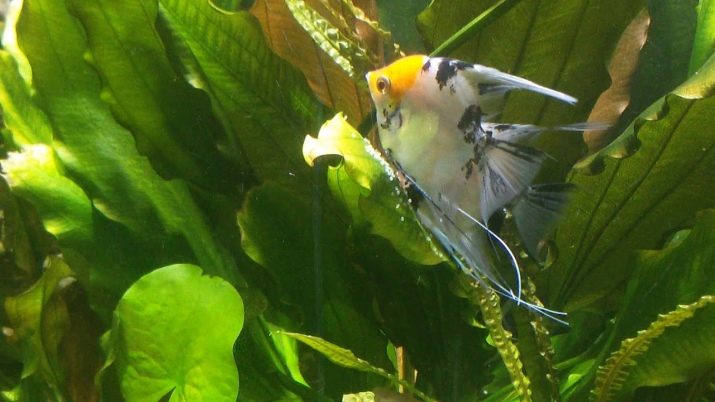
Cases of infection of fry are not excluded. In order to avoid adverse consequences, it is recommended to add agents to the water to destroy fungi and other bacteria. Signs of water pollution are turbidity. As bacteria develop, they reduce the level of transparency.
Attention should be paid to the cleanliness of the soil, as food debris begins to rot, so the amount of feed must be controlled. The development of algae changes the color of the water to a greenish or brownish color, and plaque appears on the walls of the aquarium. In these cases, antibiotics help well, as well as 3 percent hydrogen peroxide.
The clarity of the water is the key to establishing microbiological balance in the aquarium. Therefore, there is an easy way to determine the acceptable water quality. You should collect a small amount of water from the aquarium into a transparent glass - high-quality aquarium water will have a slight yellowish tint in the light.
You should also take care of the availability of oxygen at the stage of the formation of fry from eggs. At the same time, we place the caviar near the aerator, but avoiding bubbles directly on the masonry.
Determining the sex of a scalar is a rather difficult task, but with a combination of signs, even a beginner can cope with it. And the main factor for the successful rearing of healthy offspring is the aquarist's attentiveness to the needs and behavior of the fish.
For information on how to determine the sex of the scalar, see the next video.








